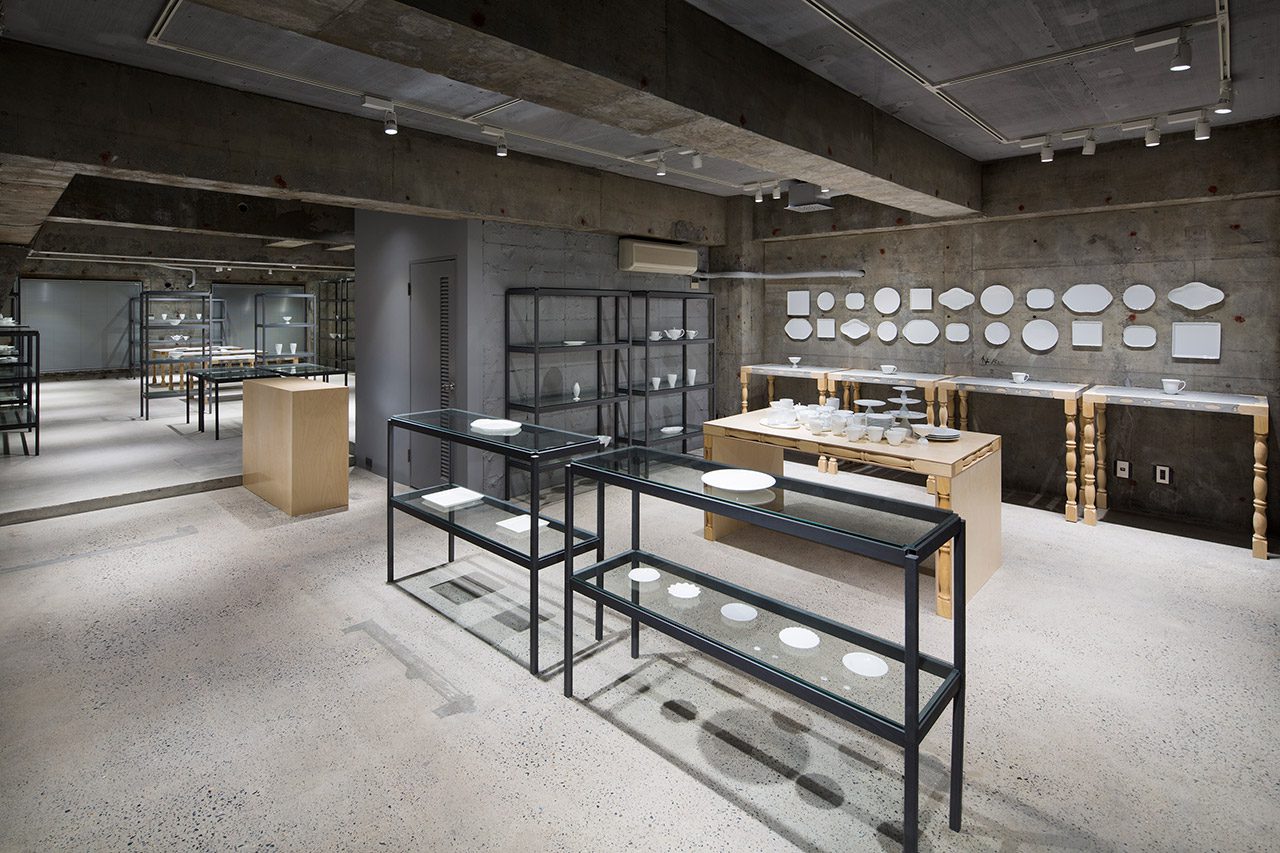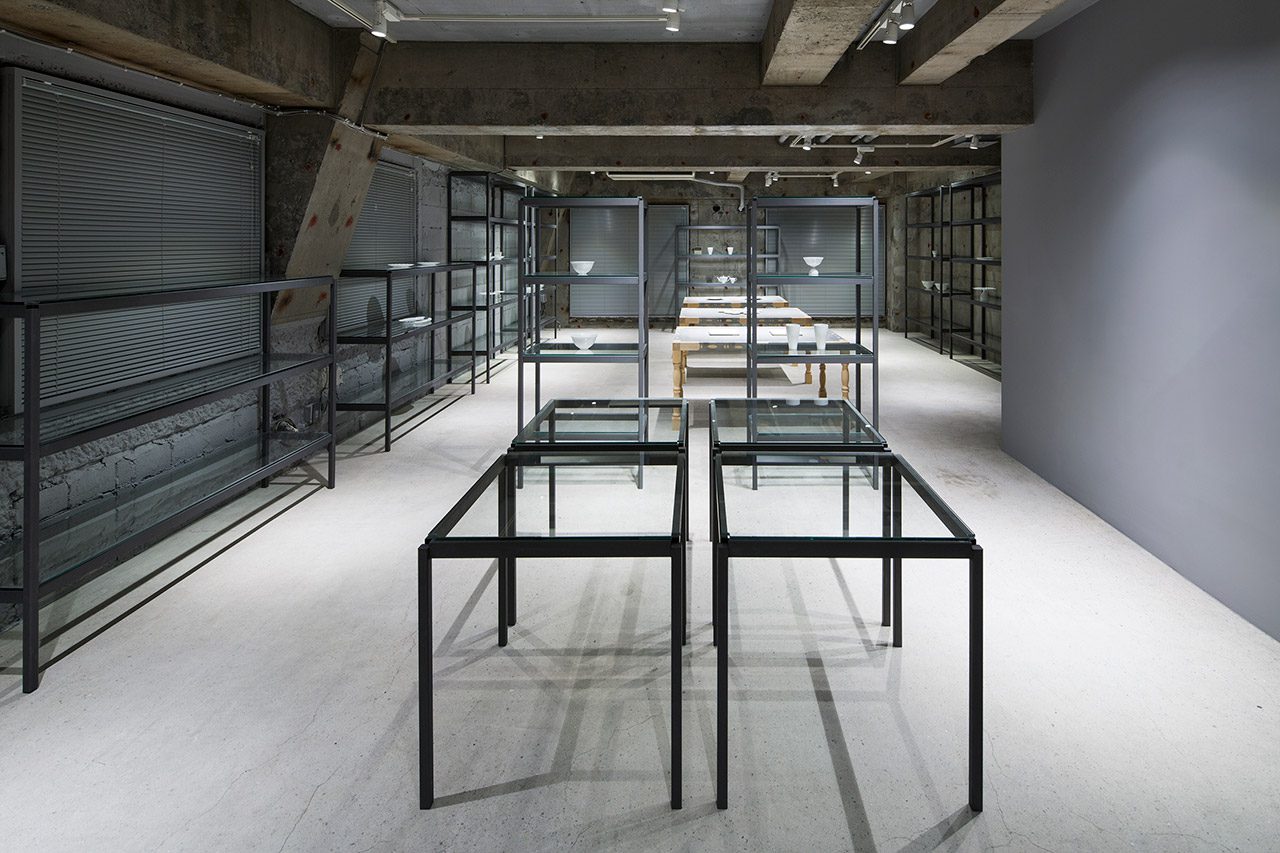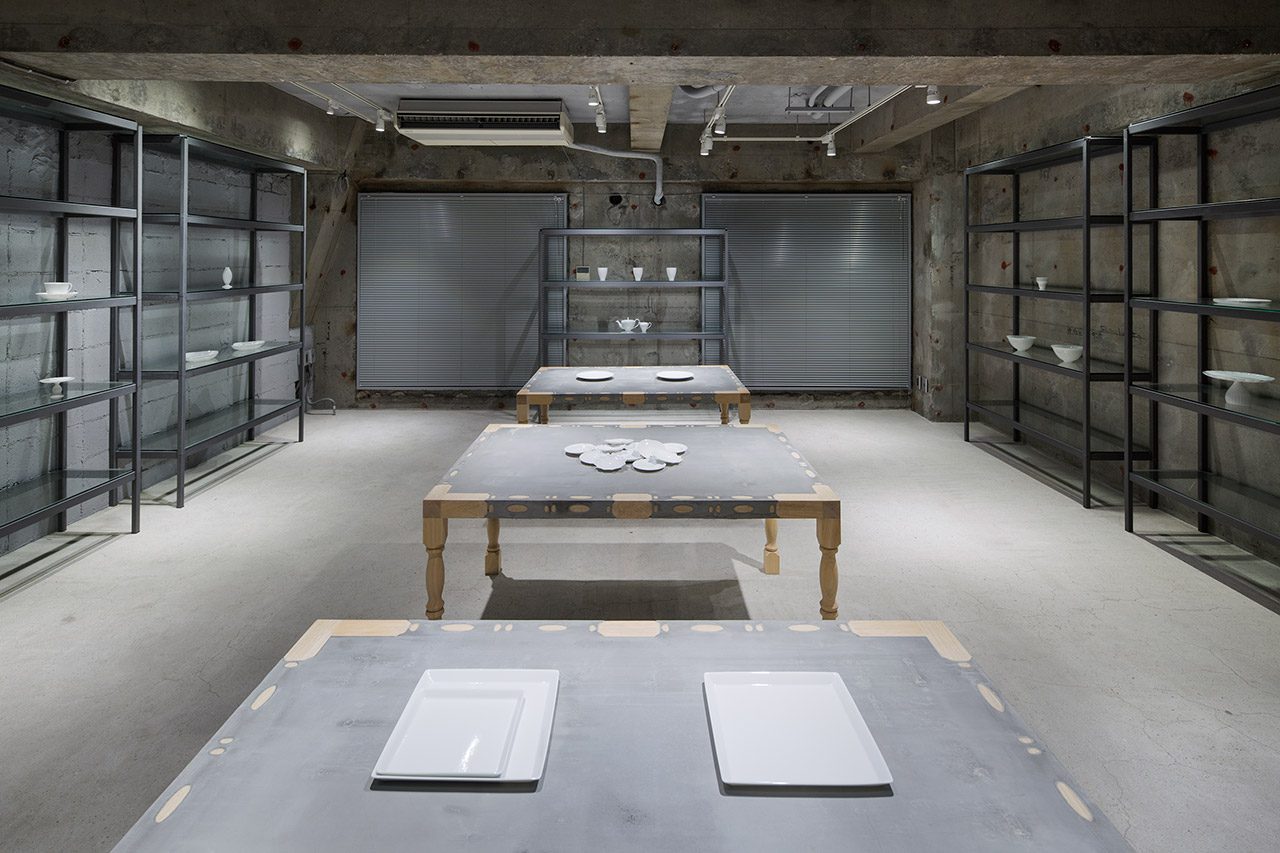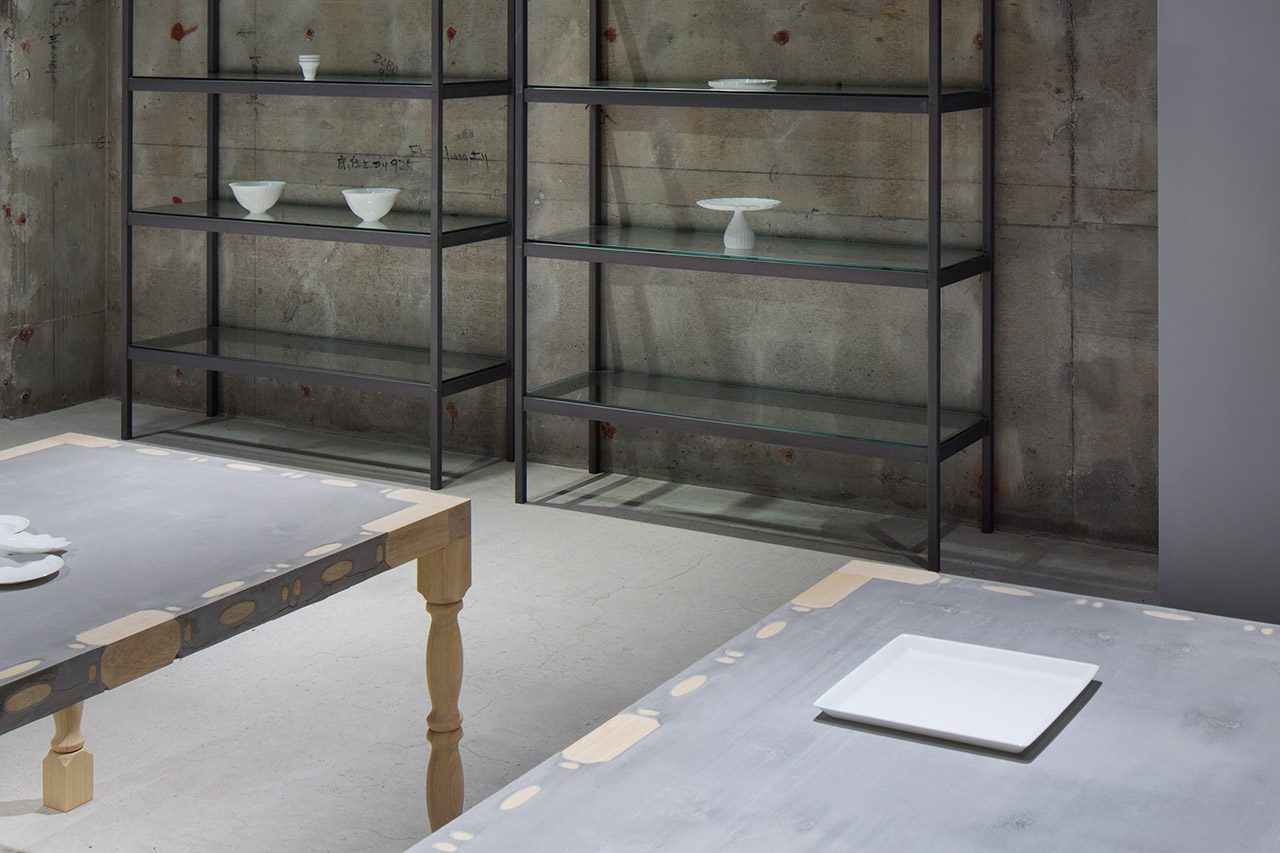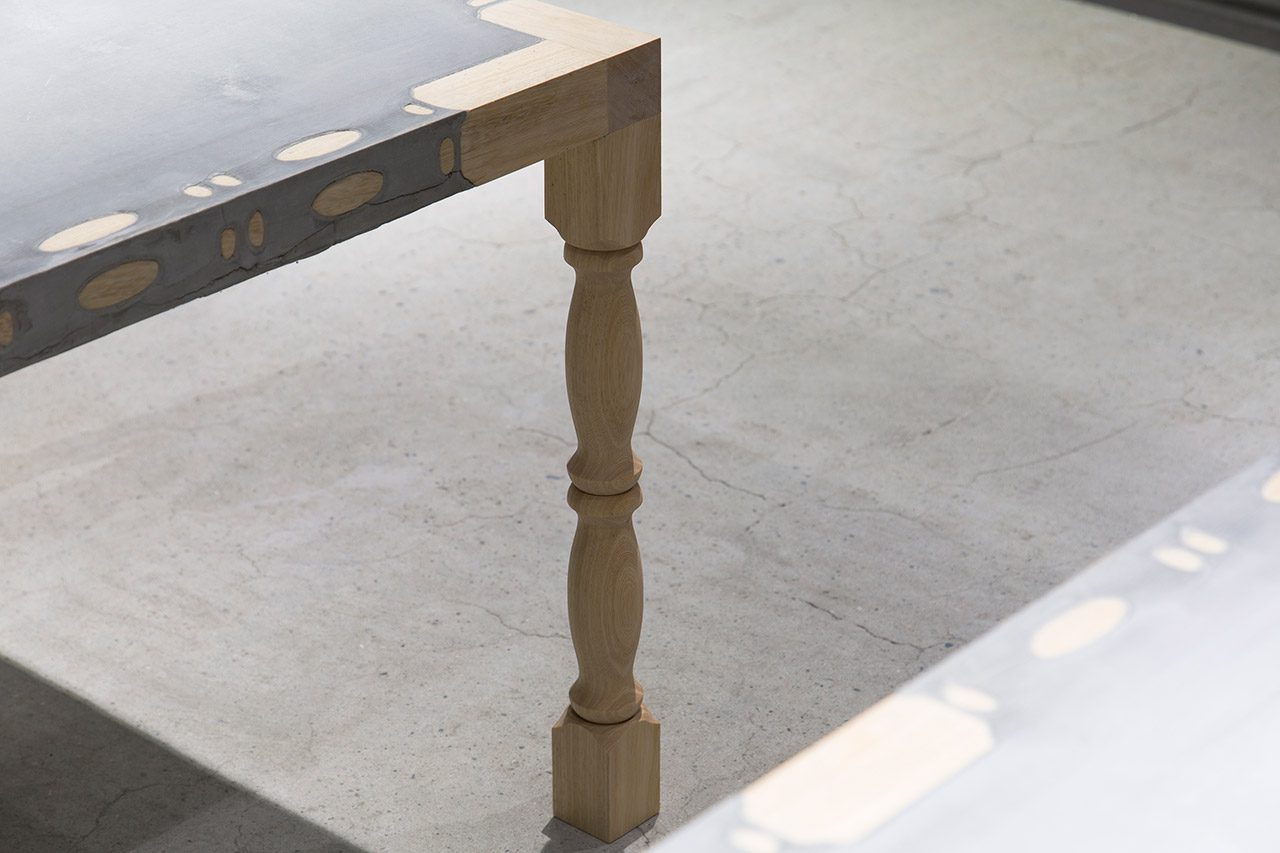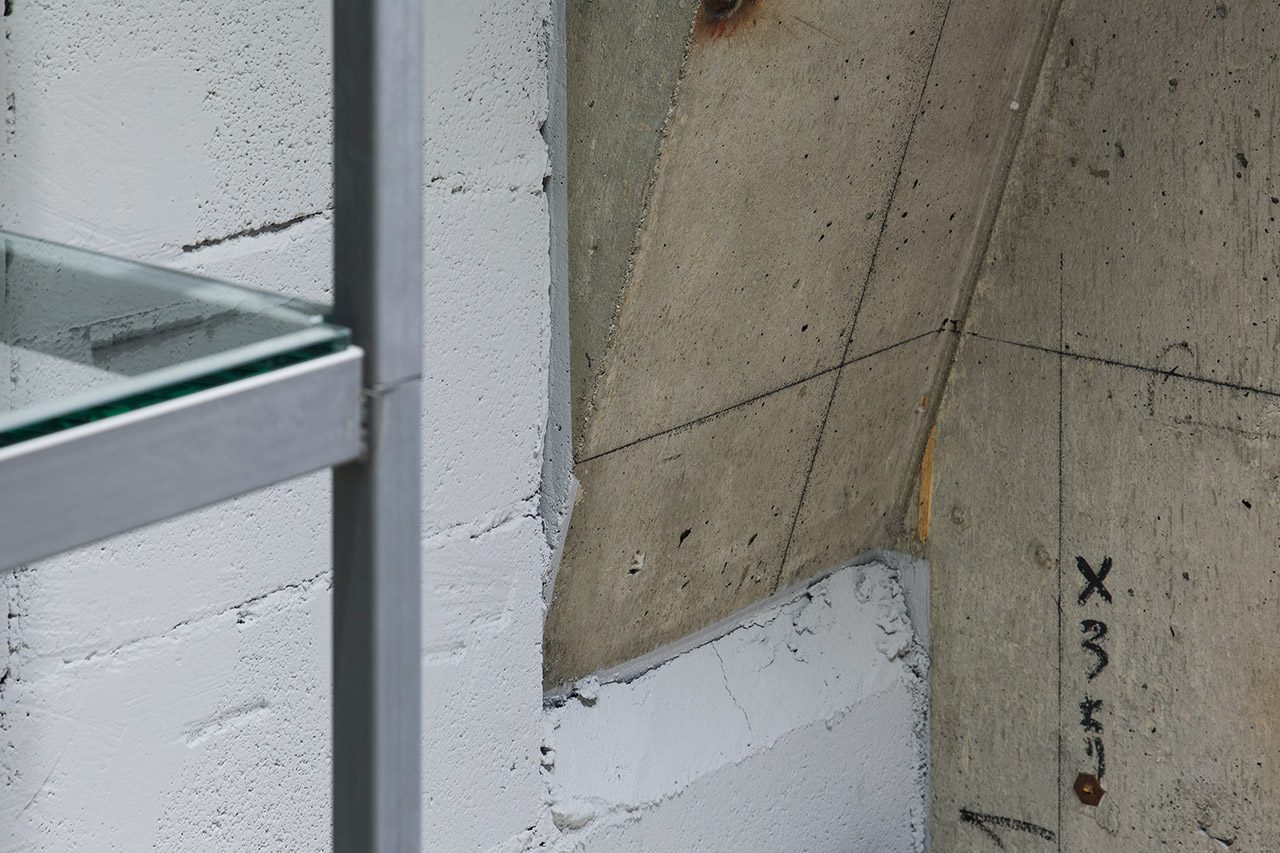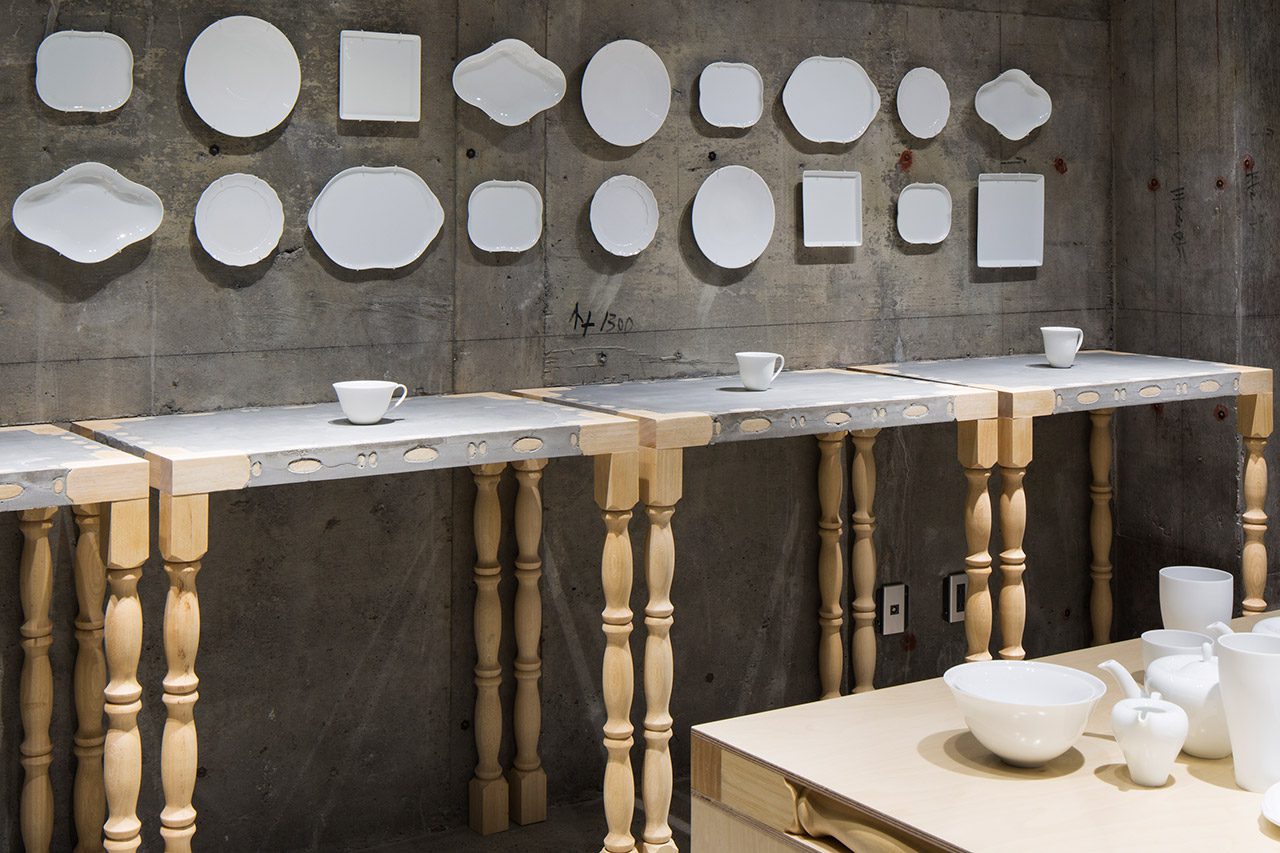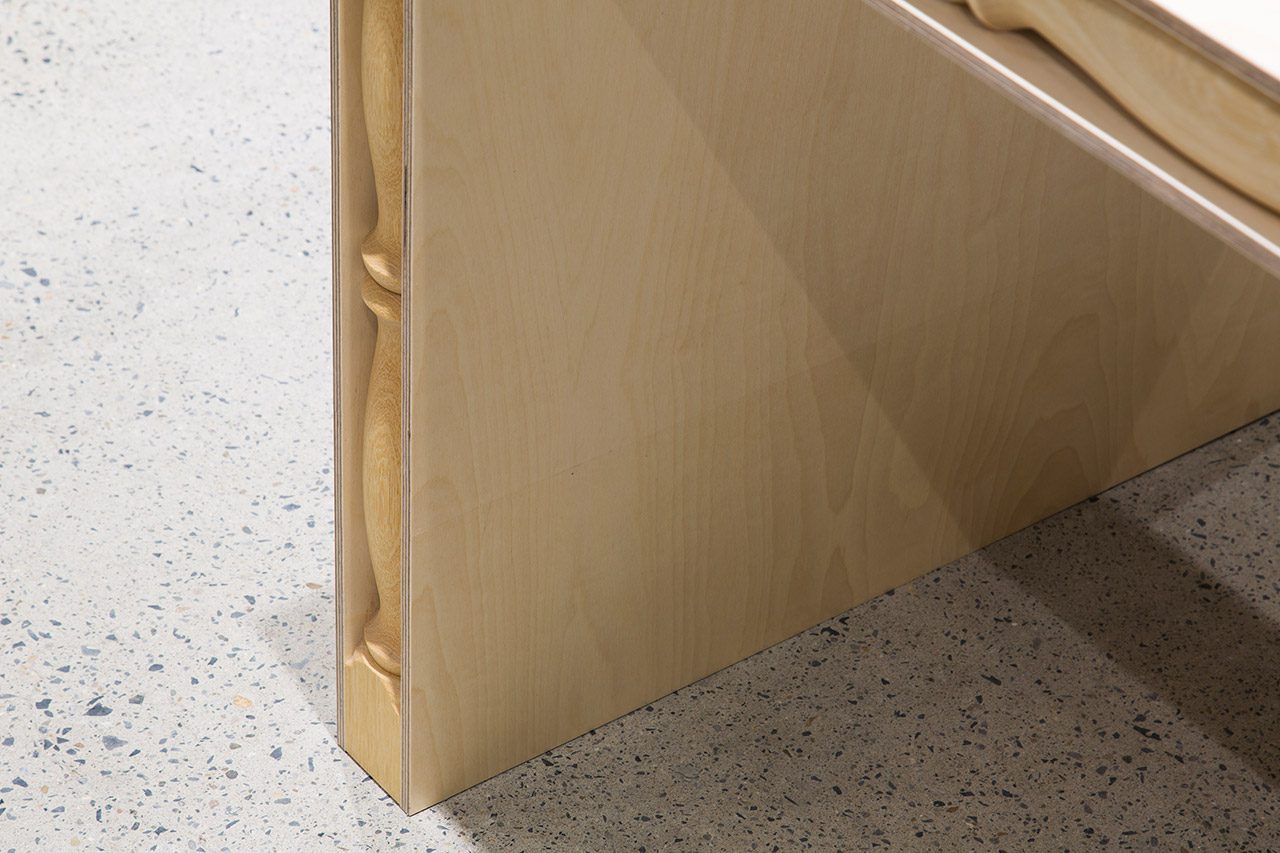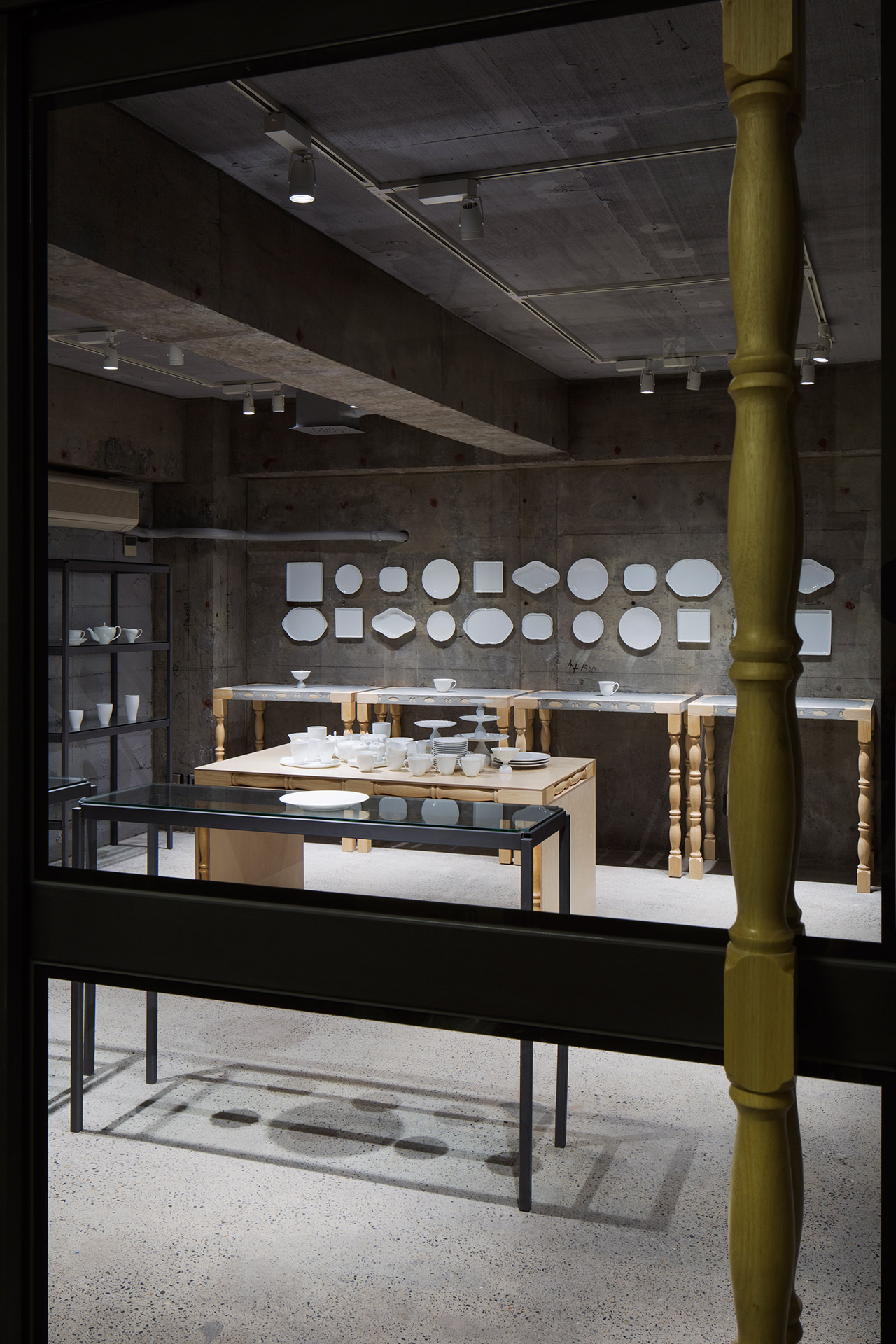Architect_TANK (Naritake Fukumoto, Zoé Boulais) feat. SUMA
Construction_TANK (Shingo Oshima)
Facilitator_MAREI
Lighting plann_Plus y
Photography_Kenta Hasegawa
Location_Koto-ku Tokyo, Japan
12.2015
スイーツに特化した新しい器の陶器のショールーム。陶器たちは白く、繊細で軽い。それを引き立てるため粗野なモルタルの天板の上に並べてみる。
サンプルを、と板を並べ、角材で囲み、型枠をつくる。そこにモルタルを流す。固まったら角材をばらし、破棄、のつもりが、無機なモルタルに有機な木がとり込まれた様が気に入った。それならいっそ残したまま脚部にも同じ角材を使おう、いや、脚にはもう少しチャームを持たせるか。角材を削りだしてつくるバラスターなどいいのではないか、ということで脚部はバラスター。試しに型枠に使う角材にもバラスターを使ったところ、角材を削りこんでいない部分はモルタル面に木が現れ、削りこんだ部分にはモルタルが流れ込み、二つがうまく溶け込んだ。
木とモルタル、そしてその上の清雅な白の陶器。粗野でいて、ぬくもりある、デリケートな空気の満ちた空間ができた。
A showroom for ceramics design, especially for sweets. The ceramics are white, delicate, and light as feathers. We’ve chosen to lay them out on a rough concrete countertop to bring the delicacy out.
We went straight to the shop for mockups. Panels were laid and framed with square lumber to create the framework. Concrete was poured, and once hardened, lumber was to be removed and discarded. However, the organic flush with the inorganic concrete charmed us:
“Why not let it be and use the same lumber for the leg?”
“No, the leg needs more charm.”
“How about carving them and giving a baluster-like charm?”
And so the legs were carved. This led us to experiment using the same carved timber for the concrete framework. The mixture flowed into the carven area, but the uncarved spots showed up on the surface. The two were integrated.
Wood and concrete, and the fragile whites on top. The space is rough but warm and with delicacy filling the air.
Yamaka Tokyo Showroom est le showroom de la marque Yamaka Shouten, dédié aux céramiques pour les gourmandises sucrées.
Ces services de table, aussi blancs et délicats qu’une plume d’oiseau, sont habilement sublimés par les mobiliers bruts en béton.
Le projet s’est dessiné rapidement, et les premiers prototypes ont été lancés. À l’aide d’un moule en panneaux de bois, le béton se rigidifie et prend l’aspect d’une table. N’ayant plus d’utilité, les panneaux de bois sont jetés. Mais la rencontre hybride de ses deux matières s’est révélée surprenante.
« Pourquoi ne pas utiliser le bois comme structure apparente ? »
« Comment rendre celuici plus élégant ? »
« Et pourquoi ne pas lui donner le charme des balustres, en bois tourné? ».
En suivant cette ligne directrice, les pieds en bois tourné deviennent alors les seuls éléments de structure. Le béton liquide s’immisce ainsi entre les interstices du bois, et laisse subtilement apparaître les courbes pour une harmonie parfaite.
Composé de mobiliers bruts et de vaisselles raffinées, l’espace dégage une atmosphère chaleureuse et rempli de sensibilité.
